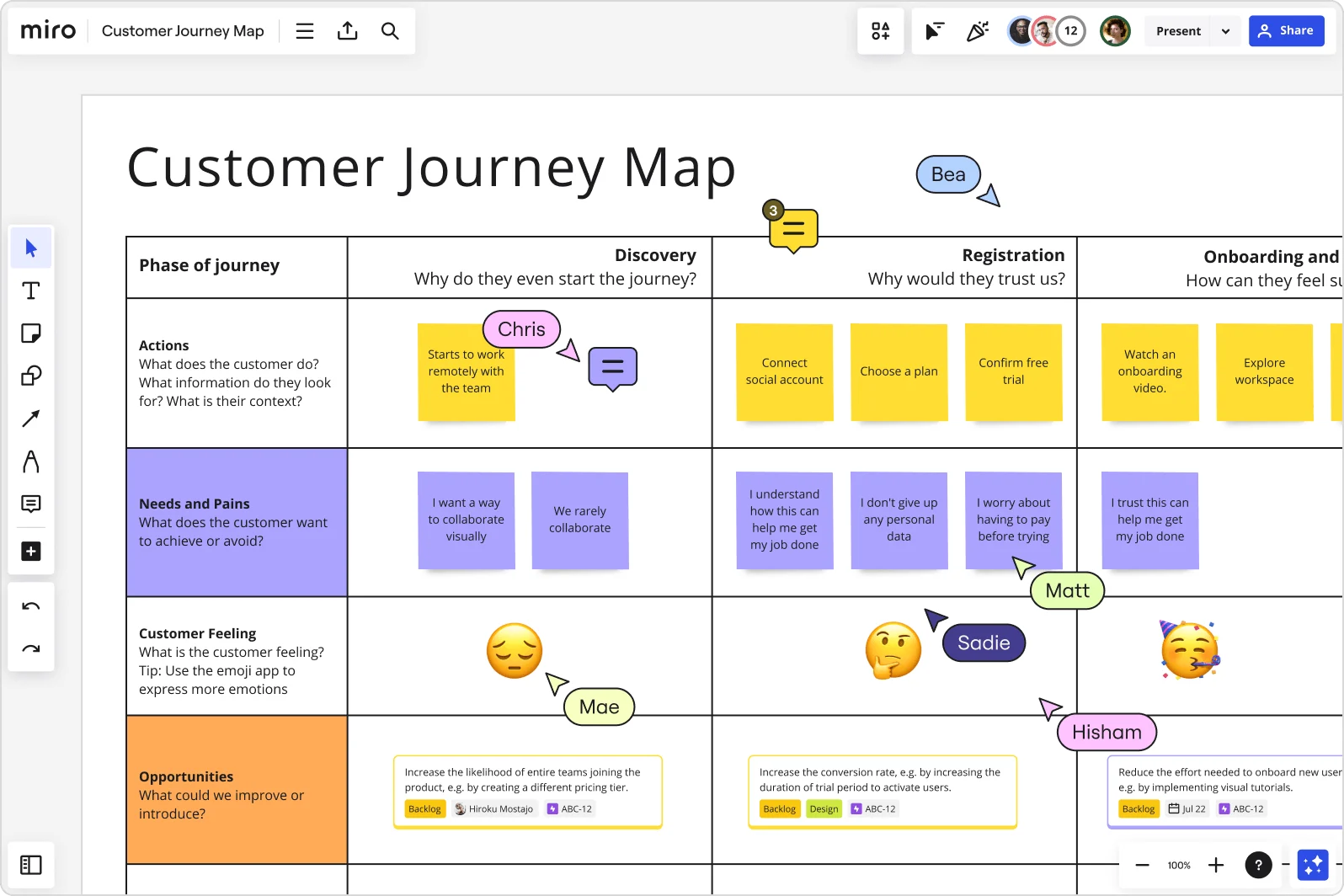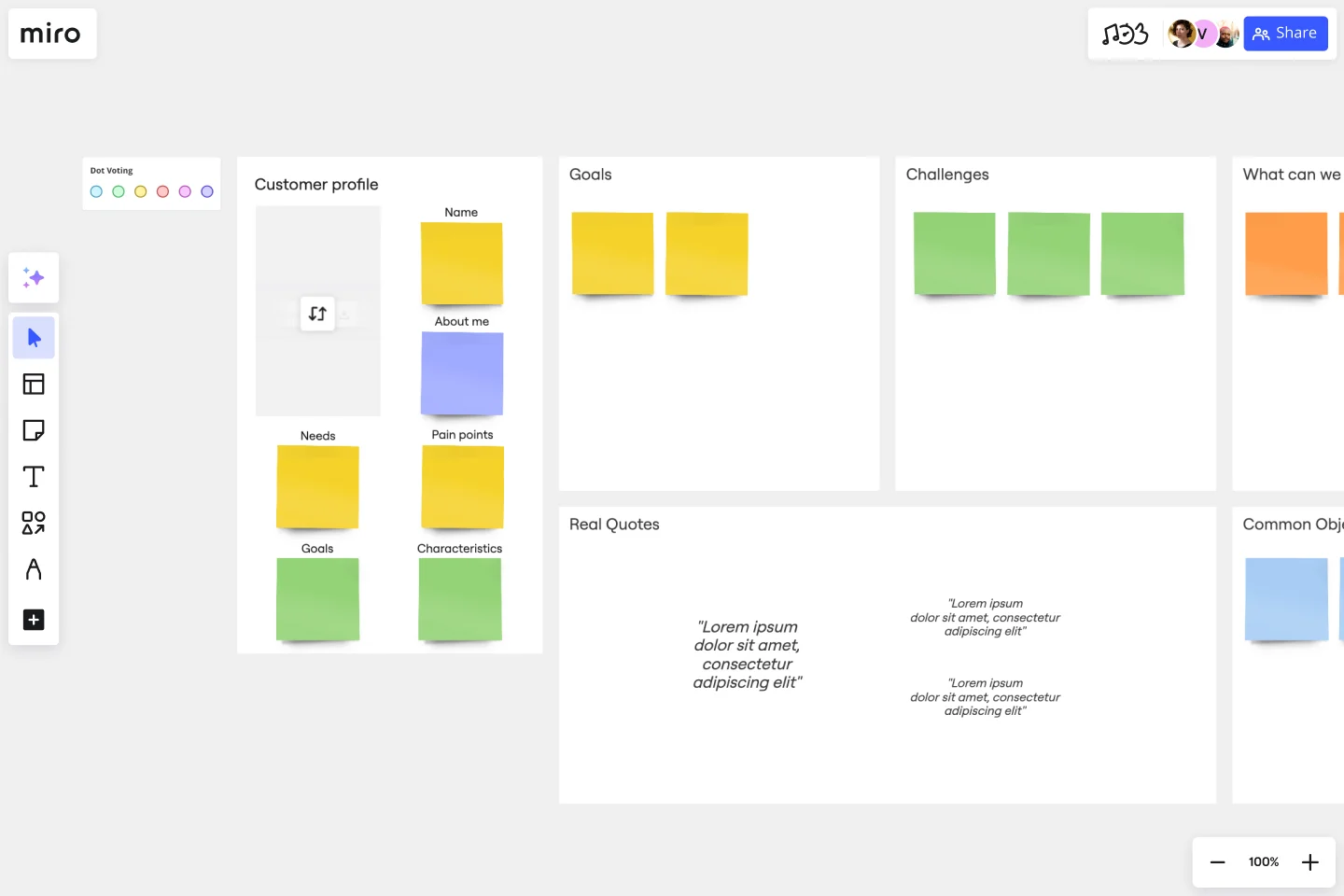
Table of contents
Table of contents
The 7 steps of the customer journey

Crafting a comprehensive customer journey map: Your essential guide
Creating a customer journey map is not just about listing the touchpoints between your customer and brand. It involves having a deep understanding of every interaction and finding ways to improve them. To create an insightful and actionable map, it is essential to take your journey mapping from basic to comprehensive. Here are some tips to help you achieve this and the steps involved in creating a journey map:
1. Setting clear goals
What it is: This initial step involves defining what you aim to achieve by mapping out the customer journey. Whether it's to enhance customer service, streamline the buying process, or increase customer retention, setting clear goals helps focus your mapping efforts.
How to do it: Begin with broad objectives, such as improving customer satisfaction, then break these down into more specific goals, like reducing response times in customer service interactions.
Pro tip: Use SMART criteria (Specific, Measurable, Achievable, Relevant, Time-bound) to frame your objectives. This will help you keep your goals precise and trackable, making it easier to measure success.
2. Collecting the right data

What it is: Data collection is gathering all relevant customer interaction data to paint a complete picture of the customer experience. This includes quantitative data from analytics tools and qualitative data from customer feedback.
How to do it: Start by identifying all sources of customer data within your organization. This might include web analytics, CRM systems, customer feedback forms, social media interactions, and sales data. Ensure that data is captured across different stages of the customer journey for a holistic view.
Pro tip: Engage directly with customers through surveys or interviews to gain insights not captured by analytics. This can provide deep dives into why customers behave a certain way or feel a particular emotion at different journey stages.
3. Creating detailed customer personas

What it is: Customer personas are detailed representations of the different segments of your customer base. These personas help you understand various customer needs, behaviors, and decision-making processes.
It should include:
Demographics: Age, gender, occupation, location, income level, and education.
Psychographics: Interests, hobbies, values, attitudes, and lifestyle.
Behavioral traits: Buying patterns, brand interactions, and product usage.
Needs and pain points: What problems are your personas trying to solve? What obstacles do they face?
Motivations and goals: What drives your personas? What are their aspirations?
For example, a persona for a tech company might be 'Tech-Savvy Tim,' a 30-year-old software engineer who values cutting-edge technology and quick, reliable service.
Creating personas is essential to tailor the customer journey map to meet the unique requirements of different customer segments. Remember that personas represent your average or ideal customers and not actual people.
How to do it: Analyze your customer data to identify common characteristics and behaviors that segment your audience. Develop personas that reflect these segments, including demographic info, psychographics, goals, and pain points.
Pro tip: Make sure to consider the emotional journey of your personas. Understanding their feelings and motivations can provide crucial insights into how to improve their journey. Try our buyer persona template.
4. Identifying all touchpoints

What it is: Customer touchpoints are all the points of interaction between the customer and your brand, from initial awareness through post-purchase.
How to do it: List every possible interaction point, including digital interactions like website visits and social media engagement, as well as physical interactions like store visits or product usage.
Pro tip: Think outside the box by identifying passive touchpoints, such as seeing a friend use your product or recommendations from peers, which can also influence the customer journey.
5. Visualizing the journey
What it is: This step involves mapping out each touchpoint along the customer journey, creating a visual representation of the paths customers take.
How to do it: Organize the touchpoints chronologically for each persona, and plot them on a timeline. Include potential branches where customers might take different paths based on their decisions.
Pro tip: Use visual symbols or different colors to denote positive, neutral, or negative experiences at each touchpoint. This can help quickly identify areas that need attention.
6. Analyzing and identifying gaps
What it is: Here, you examine the journey map to spot where customers might experience problems or less-than-optimal interactions.
How to do it: Look for high drop-off rates, negative feedback points, or stages where the customer seems to stall or disengage. Identify both the obvious and subtle gaps in the journey.
Pro tip: Conduct root cause analysis to understand why gaps occur and consider both internal factors (like process inefficiencies) and external factors (like market changes).
7. Implementing improvements
What it is: This final step involves using the insights gained from your journey map to make targeted improvements to enhance the customer experience.
How to do it: Prioritize improvements based on their potential impact and feasibility. Implement changes incrementally to test their effectiveness and adjust as needed.
Pro tip: Use metrics to track the success of each change. Consider both direct metrics, like sales and conversion rates, and indirect metrics, like customer satisfaction and repeat business.
Map your customer journey with confidence
By following a systematic approach that includes defining your goals, analyzing customer insights, and implementing targeted improvements, you can create a customer journey map that is informed by solid data. This allows you to enhance the customer experience measurably and effectively.
Miro is an excellent tool that can support your team's efforts during this process, making it easier for your team to work together seamlessly from anywhere. With Miro, you can confidently create, share, and adjust your customer journey maps, enabling you to translate insights into actionable changes that positively impact your customer experience. Miro has a customer journey mapping template that can help you get started.
With the right approach and tools, you can navigate the complexities of customer interactions with confidence and craft experiences that exceed customer expectations. This strategic effort not only boosts customer satisfaction but also aligns your team around a shared vision of continuous improvement and customer-centric innovation. Happy mapping!